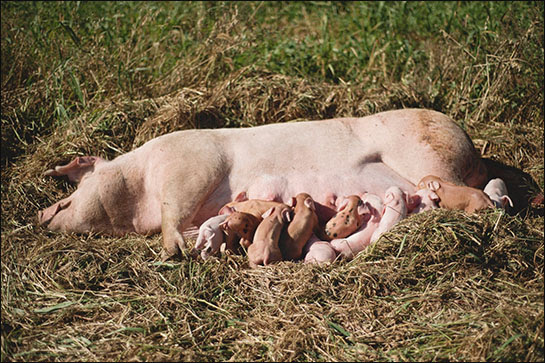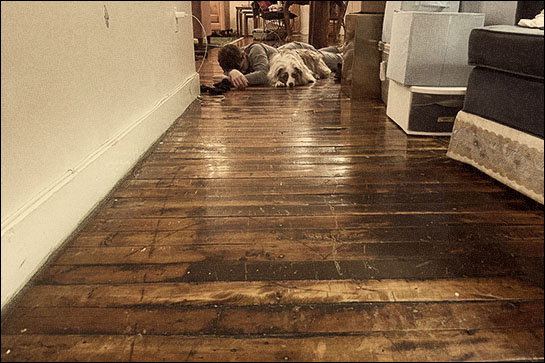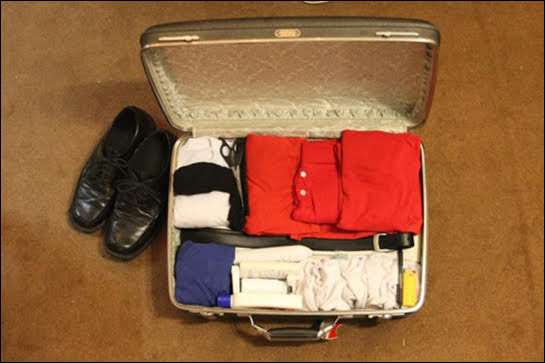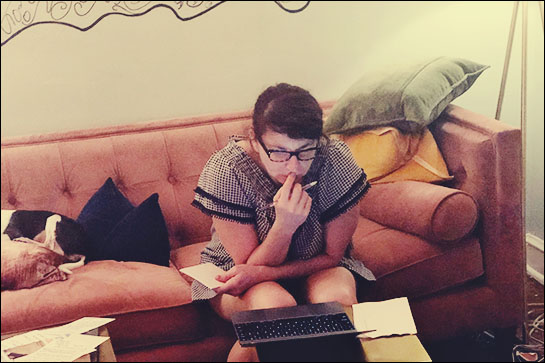
I was walking my dog in the Boston Common today, near the Embrace. A controversial sculpture is a great place to train an Australian Shepherd because people approach from all angles in the park with intention. Then people slow down and meander, directionless, trying to understand which way to look at the sculpture. Herding dogs do not respect this behavior.
So I work on teaching her to leave people alone when they are not behaving like a proper herd of cattle. I am a sloppy, inattentive dog trainer, so it’s good for me to train in an area where the stakes high if I don’t pay attention. I make my dog look me in the eye before every treat, I make her sit when someone walks close to her, I give her small treats even though my instinct is to give bigger treats because I would devote a bigger part of my brain to a task if someone were giving me bigger treats.
Two students came up to me with clipboards and said, “Do you have a moment to talk to us?” This is not unusual. If you live in expensive, liberal cities — Park Slope, Santa Monica, Boston — nonprofits hire students to ask people for money. And the kids always approach older women walking alone because the kids assume everyone else is too busy to stop. So I make a practice of telling the kids to fuck off in order to challenge their assumptions about age and gender.
But the students said, “We’re from Boston University’s business school,” so I couldn’t resist asking what they wanted to talk about. They said, “We’re doing market research for a new restaurant idea in Boston.”
I said, “I can talk with you if you can put up with me teaching my dog to not bark at you while we talk.” The dog barked at them.
They said, “The restaurant would serve only soups. Would you be interested in that type of restaurant?”
I said, “You should do a case study about Souplantation. It was a restaurant in California that catered to people with eating disorders and it went bankrupt.”
They said, “Okay. Goodbye.”
What the hell? I wasn’t done! First of all, Boston University’s business school should have an entrance exam where someone tells the prospective student that Souplantation went out of business because their client base was people with eating disorders. And if the prospective student does not ask, “Why is that?” then the student is rejected.
But I have so much more to say about a soup-only restaurant. People who make a meal out of soup are filling up on water: eating disorder (and autistic). And if they drag their friends there, the place has to have bread, and the bread has to be amazing and varied so friends come back, and then core customers gorge on bread and use soup to throw it up.
But I digress.
Let’s say there is someone who does not know about eating disorder culture and they are standing in front of a soup-only restaurant. There is soup on most menus because every culture has their own soup. There is matzah ball soup, turtle soup and gazpacho, and really, who wants to go to a single restaurant that is making all of those? It’s like going to Canal street to buy Luis Vuitton and Chanel and Supreme at the same $10 booth. Also, because there is soup on every menu, you can do a price-point study and discover that NO ONE MAKES MONEY ON SOUP.
When my kid was little, he once ordered a supersalad. The waitress said, “Huh?” It turned out that he had heard “soup or salad” so often that he thought it was one thing you got as a little extra. And that’s how everyone thinks of soup in a restaurant — as a little extra freebie. And restaurants offer a cup because most people don’t want a bowl because it’s slow to eat and Americans like to shovel in food and Boston is where you go for American food. That’s why the number-one thing served in a bowl in Boston is clam chowder: the most possible calories per spoonful.
The best way to do market research for a soup business is to make a pop-up UberEats business and see if you make money. There is no overhead, you can do different soups every day, and you can market test faster via an app where people are actually buying than walking around Boston Common where people are only guessing what they might buy. People don’t like to do quick accurate market research because they don’t want to find out their idea sucks.
Good market research happens all the time because its life observation. While I was talking with the students, I was having a really difficult time with my dog. And I decided to talk to them instead of pay attention to my dog. And I cut my training session short to go home and write this letter to them. If they had asked me, what I would have told them is Boston needs more dog training services. There are literally none. There are not even waitlists. Everyone got pandemic puppies. None of the dogs are trained by trainers. There’s a huge backlog and most of the trainers live outside of the city because why wouldn’t they?
My dream trainer would come to my apartment once a day, pick up the dog and maybe as a bonus the trainer would have a soup of the day.










